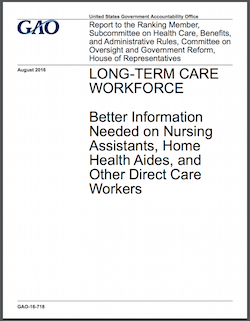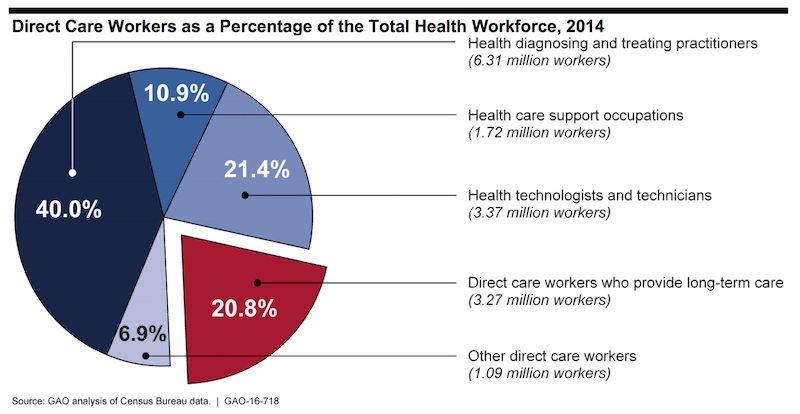
Policymakers will continue to be impeded in their ability to develop strategies to help ensure a sufficient number of qualified direct care workers for assisted living facilities, nursing homes and other settings unless the Department of Health and Human Services — specifically, its Health Resources and Services Administration — can do a better job of projecting supply and demand for such workers.
That’s according to a report released Thursday by the Government Accountability Office at the request of Rep. Matt Cartwright (D-PA), ranking member of the House Subcommittee on Health Care, Benefits and Administrative Rules.
“While policymakers and other stakeholders are aware of the challenges in recruiting and retaining direct care workers, their ability to develop relevant, targeted policies addressing these challenges has been hampered by gaps in data,” wrote the independent, nonpartisan agency that works for Congress.
The report recommended that the HRSA take steps to produce projections of direct care workforce supply and demand and develop methods to address data limitations to do so. Positions affected include home health aides and personal care aides who work in homes and residential care facilities, nursing assistants/aides who work in residential care facilities and nursing homes, and psychiatric aides.
The HRSA concurred with the GAO’s recommendation to produce projections and said that its National Center for Health Workforce Analysis is developing a fact sheet reporting demand projections for nursing assistants and home health aides. The HRSA said it will continue to look for ways to provide more information on the long-term care workforce.
A GAO analysis of Census Bureau data showed that direct care workers who provide long-term services and supports numbered an estimated 3.27 million, or 20.8% of the nation’s health workforce, in 2014. Federal data show that wages for direct care workers, although differing by occupation, generally averaged between approximately $10 and $13 per hour in 2015, according to the report. It is not clear to what extent these wage data include direct care workers employed directly by the individuals for whom they care, however, the GAO said.




